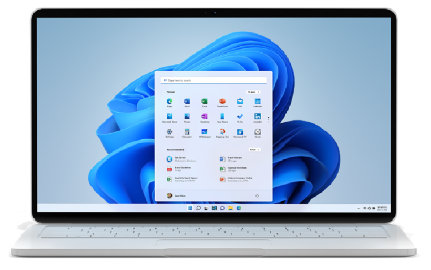-
×InformationNeed Windows 11 help?Check documents on compatibility, FAQs, upgrade information and available fixes.
Windows 11 Support Center. -
-
×InformationNeed Windows 11 help?Check documents on compatibility, FAQs, upgrade information and available fixes.
Windows 11 Support Center. -
- HP Community
- Notebooks
- AI PCs
- Suspicious file found

Create an account on the HP Community to personalize your profile and ask a question
07-17-2025 10:56 PM - edited 07-17-2025 11:02 PM
HI , there!
I am H_a_r_s_i_t , I had bought my HP laptop a year ago ,today i found a suspicious file named silent.bat on my laptop .
Further I asked Chatgpt ,then it said that this file fakes my CPU name . PLs help me to know about this file and what to do next.
Solved! Go to Solution.
Accepted Solutions
07-17-2025 11:11 PM - edited 07-17-2025 11:13 PM
Welcome to our HP Community forum!
The file named silent.bat is indeed suspicious, especially since it's reportedly faking the CPU name. A batch script cannot physically alter hardware but can spoof system information (e.g., via registry edits or overriding outputs in scripts).
If ChatGPT told you the file faked the CPU name, then the batch file may be using commands such as:
reg add "HKLM\HARDWARE\DESCRIPTION\System\CentralProcessor\0" /v ProcessorNameString /t REG_SZ /d "Fake CPU" /f
This would only affect what's displayed in system info utilities, not actual performance.
What To Do Next:
Right-click the silent.bat file → Open it in Notepad (do not run it).
If it contains suspicious commands (like registry edits, PowerShell invocations, crypto-miner commands), it’s likely malware or a spoofing tool.
Upload the file to VirusTotal for analysis: https://www.virustotal.com/
This scans it against 70+ antivirus engines.
Run Microsoft Defender Full Scan:
Start > type Windows Security > Virus & threat protection > Full scan.
Check for unauthorized startup scripts:
Press Ctrl + Shift + Esc > Startup tab
Press Win + R, type shell:startup — make sure no .bat or .exe is set to launch silently
System Integrity Check:
Run (copy/paste/enter) the following commands each at a time in Command Prompt as Administrator:
sfc /scannowDISM /Online /Cleanup-Image /RestoreHealth
Optional – Use Autoruns to investigate startup entries:
Download Autoruns from Microsoft
Look under Logon, Scheduled Tasks, and Services for anything referencing silent.bat
Consider restoring system to an earlier restore point:
Type rstrui.exe in Start menu and launch it
Additional Steps If Infection Is Confirmed:
If malware is confirmed:
Disconnect from Wi-Fi
Back up essential files
Perform a clean install of Windows from https://www.microsoft.com/software-download/windows11
Final Advice:
The presence of a batch file that modifies system registry to fake CPU info is not normal behavior and likely points to:
A prank/script used by a previous user or tech
Malware or miner masking system behavior
In my opinion, you should not ignore this. Even if no immediate harm is seen, spoofing system information is often part of larger malicious scripts.
Kind Regards,
NonSequitur777

07-17-2025 11:11 PM - edited 07-17-2025 11:13 PM
Welcome to our HP Community forum!
The file named silent.bat is indeed suspicious, especially since it's reportedly faking the CPU name. A batch script cannot physically alter hardware but can spoof system information (e.g., via registry edits or overriding outputs in scripts).
If ChatGPT told you the file faked the CPU name, then the batch file may be using commands such as:
reg add "HKLM\HARDWARE\DESCRIPTION\System\CentralProcessor\0" /v ProcessorNameString /t REG_SZ /d "Fake CPU" /f
This would only affect what's displayed in system info utilities, not actual performance.
What To Do Next:
Right-click the silent.bat file → Open it in Notepad (do not run it).
If it contains suspicious commands (like registry edits, PowerShell invocations, crypto-miner commands), it’s likely malware or a spoofing tool.
Upload the file to VirusTotal for analysis: https://www.virustotal.com/
This scans it against 70+ antivirus engines.
Run Microsoft Defender Full Scan:
Start > type Windows Security > Virus & threat protection > Full scan.
Check for unauthorized startup scripts:
Press Ctrl + Shift + Esc > Startup tab
Press Win + R, type shell:startup — make sure no .bat or .exe is set to launch silently
System Integrity Check:
Run (copy/paste/enter) the following commands each at a time in Command Prompt as Administrator:
sfc /scannowDISM /Online /Cleanup-Image /RestoreHealth
Optional – Use Autoruns to investigate startup entries:
Download Autoruns from Microsoft
Look under Logon, Scheduled Tasks, and Services for anything referencing silent.bat
Consider restoring system to an earlier restore point:
Type rstrui.exe in Start menu and launch it
Additional Steps If Infection Is Confirmed:
If malware is confirmed:
Disconnect from Wi-Fi
Back up essential files
Perform a clean install of Windows from https://www.microsoft.com/software-download/windows11
Final Advice:
The presence of a batch file that modifies system registry to fake CPU info is not normal behavior and likely points to:
A prank/script used by a previous user or tech
Malware or miner masking system behavior
In my opinion, you should not ignore this. Even if no immediate harm is seen, spoofing system information is often part of larger malicious scripts.
Kind Regards,
NonSequitur777

07-21-2025 12:26 AM - edited 07-21-2025 12:42 AM
@NonSequitur777 thanks for the information , but if you said previous owner then i like to tell you that i bought it from hp store(Nehru Place ,Delhi) and i have given it to hp service center only ,so that's why I have more worried ,sorry to say that but if that thing is done by a reputed brand's dealers then what else horrible i can expect.
And on suspicious thing i also remembered that when i bought this ,the hp staff plugged a usb and installed something i don't know whether they were drivers or anything else, and that was not like windows installation.
07-21-2025 07:50 AM


